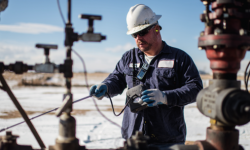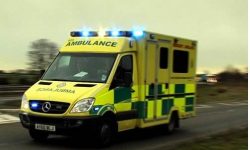Our workplace safety needs work by Val Leveson. Available from <http://www.nzherald.co.nz/business/news/article.cfm?c_id=3&objectid=11946582> [22 Nov, 2017 9:53am ]
What many people don't realise about workplace safety is that while the level of accidents that cause fatality and injury are appalling, there also needs to be awareness around the fact that there are ten times more workplace diseases and health-related issues than sudden accidents.
NZ Council of Trade Unions (CTU) President Richard Wagstaff says when someone dies or is badly injured at a workplace, it gets a lot of coverage. When work causes chronic pain issues, diseases and psychological problems, it's less covered in the media.
Looking at workplace deaths and injury, the union states that statistics released recently show that New Zealand workplaces have a big problem.
"These numbers show that, on average, over 51 Kiwis a year are being killed at work. Working people are not being kept safe - employers need to do more, Government needs to do more. Every single working Kiwi should have confidence that they'll return home safe at the end of their working day," says Wagstaff.
In addition to the 51 killed, Wagstaff says, "346 people were seriously hurt at work - these people were hospitalised and there was a 'high threat-to-life'. For many of these 346 people their lives have been changed forever.
"Already five men have been killed in forestry this year and the numbers of people being killed in agriculture and manufacturing are increasing. There is clearly still more work that needs to be done specifically in these industries."
Wagstaff says that it's worth noting that none of these figures include deaths and serious harm from occupational disease which is estimated to kill between 10 and 15 people on average every week (500-800 a year)."
"In New Zealand we still have a 75 per cent higher fatality rate than the United Kingdom in 2014 (latest available). We still have lots to do."
Wagstaff told the Herald that a lot of New Zealanders are not aware that substances such as asbestos are still a problem in the workplace.
He says keeping people safe at work is also about keeping an eye on psycho-social issues. "The culture at work can be good for you or bad for you - and if it's bad for you, it could cause all sorts of harm."
Wagstaff says that the New Zealand work culture tends to be very managerial and top-down where employees often have no or little control over the work that they do.
"Research does show that having some control over your work and having a sense of self direction is healthy. Having a heavy workload that you have little control of is really bad for levels of stress and mental wellbeing."
He says the challenge is to create a humane culture of work that does not allow bullying, either top-down or horizontal, a culture that cares about employees. He agrees that as far as workplace accidents are concerned, that often they happen where the workplace culture values productivity and the bottom line over safety.
"In a way the long-term physical and psycho-social injuries are the elephant in the room - accidents and fatalities grab the headlines, but it's ten times more likely that someone will suffer occupational health problems rather than death."
He says, "New Zealand has real problems in the area of work culture. In other countries the management style of control and command has been challenged to good effect."
He says it seems there is currently no real support for New Zealand workers to speak up if they feel ill treated, except for by going to unions, and for some, it's often difficult to key in to the union.
This is particularly true with the growing insecure work environment. "Many workers, particularly those on casual contracts, are highly vulnerable. These individuals don't want to be seen as being moaners - as that may stop them from getting the next shift."
His suggestion to employers is to create a workable, successful health and safety programme that factors in all aspects of what's needed. "It will help workers not feel so vulnerable in their work."
WorkSafe has guidelines on their webpage (http://www.worksafe.govt.nz/worksafe/) that are helpful.
Having a Health and Safety representative with proper training and an awareness of psycho-social risks is important.
"It's important to see mental health not as a stigma, but normal life and like other health issues an employee may suffer."
Wagstaff says seeing to the safety of employees is not a cost but a benefit.
"If you're creating a better place to work, you're going to enjoy more productivity. The analogy I like to use is this, "If you have two bottles of water, and you shake one as it pours, it doesn't move the water faster than the one that you pour without shaking. In fact the second way is probably more effective."
Our workplace safety needs work by Val Leveson. Available from <http://www.nzherald.co.nz/business/news/article.cfm?c_id=3&objectid=11946582> [22 Nov, 2017 9:53am ]









